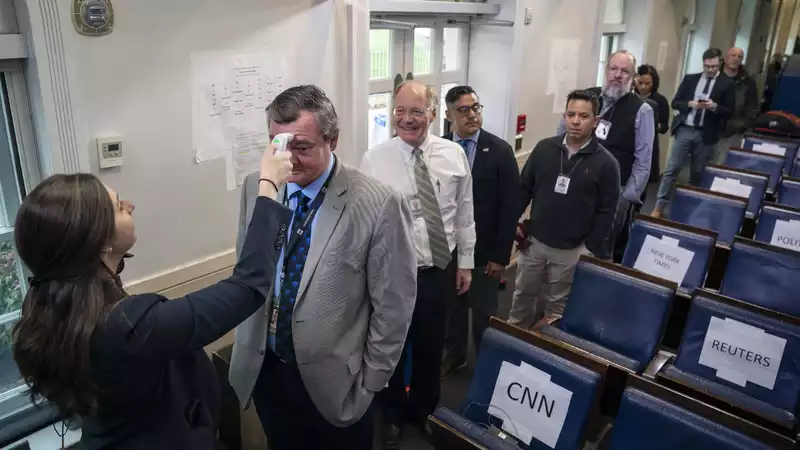COVID-19 Exposes the Dangers of Gender Inequality
Women now make up the majority of the U.S. workforce, but in addition to paid employment, they perform the majority of unpaid household chores and caregiving. From baking to baking to customer care to childcare, women spend 102 more hours per year than men in unpaid household and family care. This deeply entrenched gender imbalance is known as the "second shift."
Now, as COVID-19 closes schools, shuts down businesses, and forces hospitals to allocate care, many women are having to do more with less, creating a veritable "third shift" that puts everyone's health and well-being at risk It doesn't have to be this way. It doesn't have to be this way. Congress can pass legislation that provides all working people with paid leave and paid family leave to care for their loved ones, immediately and permanently.
Currently, the United States is one of only two OECD countries that do not guarantee workers paid leave for personal illness, leaving approximately 32 million U.S. workers without access to a single day of paid leave. Eleven states, including the District of Columbia, and 22 other jurisdictions have paid sick leave laws, but these are far from adequate. Everyone needs paid sick days at all times, especially in the midst of this unprecedented public health crisis, regardless of where they live or the size of their employer.
The lack of paid sick days in the U.S. is hurting all working families. However, its effects are felt most acutely by women, especially low-wage workers and women of color. More than half of Latino women and one-third of black women do not have the option of taking paid leave when they are sick, and seven out of ten workers in low-wage jobs do not take paid leave.
And that puts us all at greater risk. Studies show that workers without sick leave are 1.5 times more likely to go to work when they get sick. Sick workers who show up to workplaces such as daycare centers, nursing homes, and offices threaten not only their own road to recovery, but also the health of those around them. Unfortunately, workers who have the most contact with the public, such as nurses, housekeepers, social workers, and caregivers, are the least likely to follow the CDC's advice to stay home if they become ill. (opens in new tab) These systemic racial and gender inequities, coupled with school closings and an increasingly strained health care system, are potentially deadly in the face of COVID-19, a global pandemic that is dangerous even at the best of times.
Women are also typically responsible for caring for sick loved ones.A (opens in new tab)According to a recent study on unpaid caregiving, 60% of unpaid caregivers are women. This means that many women are responsible for caring for sick relatives, aging parents, and children while working low-paying jobs to make ends meet. For women of color, the burden is even greater, with black family caregivers spending an average of 28.5 more hours per month (open in new tab) caring for their families than their white counterparts. The lack of paid leave means that many women must leave vulnerable loved ones home alone or lose income to stay home and care for them.
No one should be forced into financial ruin or experience hardship at work simply because they need to take time off work to care for a new child, nurse a sick family member, recover from an injury, or stop the spread of the coronavirus. Congress has taken an important step forward by creating emergency paid leave legislation, but this bill falls far short of what is needed to level the curve and ensure that all workers can take time off to protect the health of themselves and those around them.
The emergency assistance package called the Families First Coronavirus Response Act (opens in new tab), which President Trump signed into law on March 18, provides for federal emergency paid leave benefits, but only for some people. It would require private employers with fewer than 500 employees to provide two weeks of paid sick leave if an employee is unable to work due to quarantine or COVID-19 symptoms or must care for a child or family member affected by COVID-19. Small businesses with fewer than 50 employees may be exempt, so about 12 million workers may not qualify. (Opens in new tab) An additional 6.5 million people working for companies with more than 500 employees who did not have paid sick leave in 2019 are also at risk.
We need to give all workers permanent paid sick leave, including after this crisis has passed. We do not have a moment to lose. Too many lives are at risk.
Employers do not need to wait for public policymakers to act; they can extend paid sick leave themselves. By investing in the workforce, employers can retain trained and dedicated workers who will be stronger and better prepared to move forward as the economy recovers.
That is why we all have a responsibility to do our part to protect our communities, whether we are business leaders who can offer paid leave to workers or individuals who can speak up to make paid leave a reality for all workers, without exception.
The need for paid leave is not new, but it is more urgent than ever.
Tina Chen is president and CEO of TIME'S UP Now, which works to change culture, corporations, and laws to create safe, fair, and dignified jobs for all. To join the fight, text "NOW" to 306-44.
To read more stories like this, including celebrity news, beauty and fashion advice, savvy political commentary, and fascinating features, sign up for the Marie Claire newsletter.
Sign up here
.






Comments